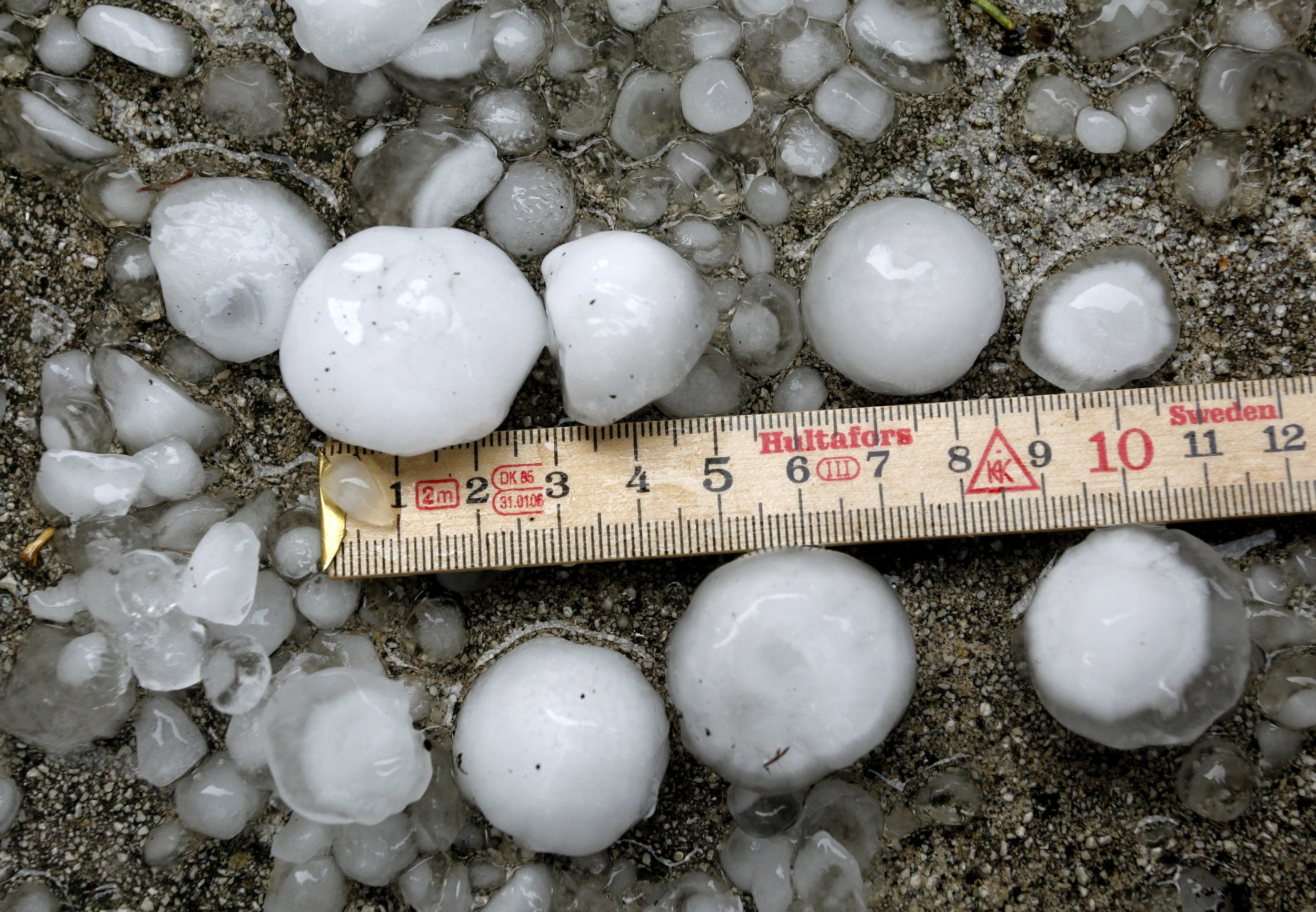
Golf-ball sized hail that can crack car windscreens, damage roofs and decimate crops are set to become the norm across parts of North America as a result of climate change.
That is according to a new study in the journal Nature Climate Change that looked at how projected climate conditions over the coming decades will affect hailstorms, including their frequency and the size of the stones produced.
There has been much research into how anthropogenic climate change will impact storm frequency over North America, with findings indicating severe thunderstorms will become more common in the coming years. But how the hazardous features of these predicted storms, like the size of hail and tornadoes, will change is not well understood.
Hail poses a specific economic risk during storms, costing billions of dollars in damage every year. Small storms, with stones less than 2 centimeters wide, have the potential to cause severe damage to crops, especially if they hit when the plants are at vulnerable growth stages. Bigger storms, with stones between 2-4cm (0.8-1.5 inches), can cause significant damage.
"Stones in the lower end of this diameter range are most likely to damage tree foliage and agricultural crops (including fruits), while stones in the upper end of the range can damage car panels, house siding, plastic outdoor furniture, roofing (e.g., shingles) and may even crack car windshields," study author Julian Brimelow tells Newsweek in an email interview.
"Damage can be worse if the hail is accompanied by strong winds and/or if large amounts of hail within this size range fall," he adds.
Hail forms during thunderstorms, when updrafts carry droplets of water high enough for them to freeze. These frozen droplets can then grow in size as more water freezes to each one. Once the drops get too heavy to be carried by the updrafts, they fall back down to Earth as hail.
In the study, the scientists looked at how hail will respond to the higher global temperatures predicted under the Intergovernmental Panel on Climate Change's "A2" scenario, which is on the upper end of the spectrum of climate change—but is the emission trajectory we are closest to at the moment.
The team created simulations for hail over North America between 2041 to 2070. They then compared this to present day conditions, between 1971 and 2000. Their projections show how in most locations, there will be a reduction in the number hail days during spring and summer. However, when these storms do hit, the stones will be much larger, with hail between 2-4cm becoming more and more common. This shift is particularly prominent over the central to northern plains.
Brimelow says he hopes their findings are used to assess how hail damage will change in the coming decades. "We certainly hope that this work will help authorities, including building codes, for example, make informed decisions about preparing for the future," he says. "It would be helpful if someone were to now look at the socioeconomic impacts by taking into consideration future population and infrastructure growth."
In a related News & Views article, John Allen, from Central Michigan University, said the study "provides an important and much needed insight into the implications of anthropogenic warming on hail frequency and size."
He notes the study is not without its limitations—individual storms that produce hail can change in character and precipitation levels, so forecasting is inherently difficult—but that this highlights the need to look at how individual storms will respond to future climate conditions.
"Given the global relevance of hail, exploring how hail occurrence, and its damaging potential, will evolve worldwide under a warming climate is a pressing need for future research," Allen concludes.
Uncommon Knowledge
Newsweek is committed to challenging conventional wisdom and finding connections in the search for common ground.
Newsweek is committed to challenging conventional wisdom and finding connections in the search for common ground.
About the writer
Hannah Osborne is Nesweek's Science Editor, based in London, UK. Hannah joined Newsweek in 2017 from IBTimes UK. She is ... Read more
To read how Newsweek uses AI as a newsroom tool, Click here.








